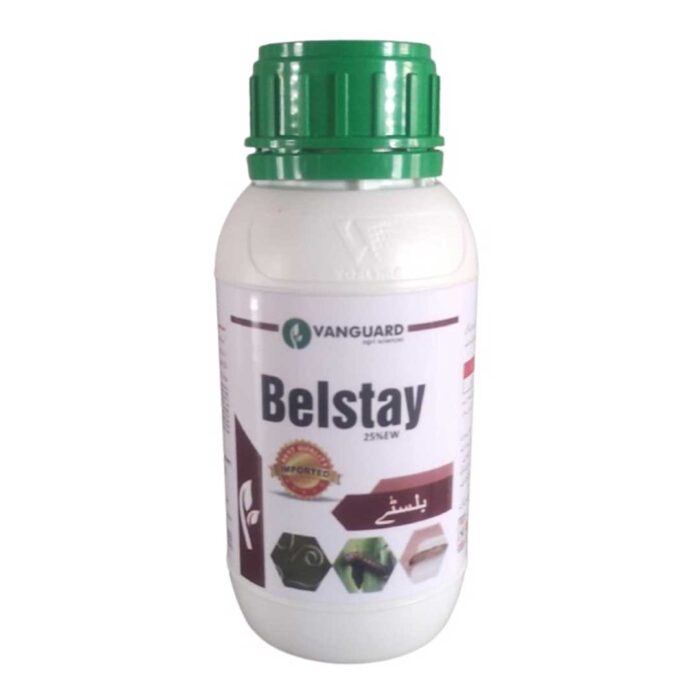Belstay 25% EW (Carbosulfan+Emamectin)
Carbosulfan is a world renowned insecticide of carbonate group, which by its dual contact and stomach poison action, gives effective control of insects. Carbosulfan Biochemistry Cholinesterase inhibitor activity is due to in vivo cleavage of the N-S bond, resulting in conversion to carbofuran. Mode of action Systemic insecticide with contact and stomach action. It controls the following groups of insects:
Lepidoptera: Stalk borers, bollworms, cutworms, armyworms, loopers, leaf rollers. Hemiptera-Homoptera: Aphids, scales, whiteflies, leafhoppers, plant hoppers, mealy bugs, suckers, leaf
rollers Hemiptera-Heteroptera: Plant bugs, capsids, stainers Coleoptera: Weevils, flea beetles Diptera: Leaf miners, midges, maggots, Mediterranean fruit fly.
The pesticide and acaricide emamectin benzoate is very effective. Despite the fact that Emamectin benzoate has a wide range of pest control activity. A macrocyclic insecticide with post-aqueous hydrolysis stability is emamectin benzoate. Sometimes, emamectin benzoate can be used as an acaricide on some fruits, vegetables, and cereals. Emamectin benzoate works by enhancing the effects of neurotransmitters like glutamate and beta-butyric acid. The insect pests rapidly cease eating after coming into touch with the toxic component, and they eventually perish. Emamectin benzoate is not harmful to people, pets, or the environment. It targets all Homoptera, Diptera, Thysanoptera, Lepidoptera, Coleoptera, and mite species of insects.
These two compounds are combined to create this product using an EW formulation. Concentrated emulsions, commonly referred to as oil-in-water emulsions (EW), are preparations that produce a stable emulsion of the active component in an aqueous phase and are meant to be diluted in water prior to use. Typically, the liquid that makes up the dispersed oil phase is the active component. Dosage is 250 ml/acre.


